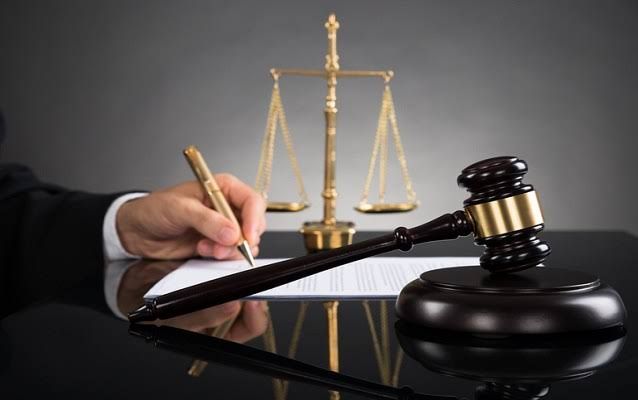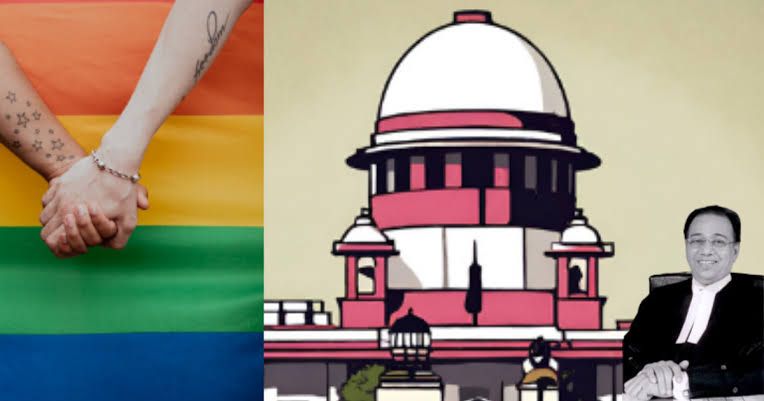Author-Prity Bhagat, a Student of KES. Shri Jayantilal H. Patel Law College, Mumbai
Abstract:
A five-judge Supreme Court bench rendered its decision in the Sabarimala Temple Entry case on September 28, 2018. The practice of the temple to exclude women is unconstitutional, according to a 4:1 majority. It was decided that the practice infringed upon female worshippers’ basic right to freedom of religion—Article 25(1). Rule 3(b) of the Kerala Hindu Places of Public Worship Rules, 1965, which permitted the customary exclusion of women, was declared illegal by the Bench. Chief Justice Misra, Justice Nariman, Justice Chandrachud, and Justice Malhotra each wrote a distinct opinion that was presented by the court. Justices Nariman and Chandrachud agreed with Chief Justice Misra’s assessment. Justice Indu Malhotra presented the case’s dissenting opinion.
The Sabarimala case has profound societal implications, touching upon deeply ingrained beliefs, traditions, and notions of gender roles in Indian society.
Introduction:
The case of *Indian Young Lawyers Association v. State of Kerala* (2018) marks a significant milestone in the Indian judicial system and its constitutional jurisprudence. This landmark judgment, delivered by the Supreme Court of India, dealt with the entry of women of menstruating age into the Sabarimala Temple in Kerala, a practice that had been historically prohibited. The court’s decision to lift this ban is a profound example of judicial intervention in religious practices to uphold constitutional rights, and it has sparked extensive debates on the intersection of religion, gender equality, and the role of the judiciary.
Facts:
The Sabarimala Temple, dedicated to Lord Ayyappa, is one of the most famous Hindu temples in Kerala. Traditionally, the temple has barred women of menstruating age (between 10 and 50 years) from entering its premises, citing the deity’s status as a celibate. This practice was formalized under Rule 3(b) of the Kerala Hindu Places of Public Worship (Authorization of Entry) Rules, 1965, which prohibited women from entering the temple during these years. The practice of restricting women’s entry violated their fundamental rights under the Indian Constitution, argued the petitioners.
Issues:
- If a practice that excluded people based on a biological trait that was specific to women violated Articles 14, 15, and 17 and was not regulated by Articles 25 and 26 of the Constitution’s definition of “morality,” then it constituted “discrimination”
- Why was the constitutional morality violated by a’religious denomination’ overseen by a statutory body and funded by the Consolidated Fund of Kerala and Tamil Nadu, and did Ayyappa Temple have a denominational character?
- Was the exclusion of such women an “essential religious practice” under Article 25, and can a religious institution assert its right to manage its affairs in religious matters in this regard?
- Whether Rule 3 (b) of the Kerala Hindu Places of Worship Rules, 1965 prevailed over the Kerala Hindu Places of Worship Act, 1965 and, if dealt with internally, whether it violated Part III of the Constitution?
Petitioner’s Arguments:
- The petitioners argued that discrimination against menstruating women was arbitrary under Article 14 because there was no constitutional basis for creating a separate, marginalized class of women between the ages of 10 and 50.
- They also argued that the temple of Lord Ayyappa and its devotees do not constitute a separate religious denomination within the meaning of Article 26.
- In addition, one interim statement (No. 10, 2016) argued that mandatory reporting of menstruation violates women’s right to privacy.
- They relied on K.S. Puttaswamy and Anr. Vs. Union of India ((2017) 10 SCC 1) arguing that denying entry to menstruating women was exclusionary and prejudicial to their dignity.
Respondent’s Argument:
- The Respondents argued that Rule 3(b) was not unconstitutional, as it did not deny entry to all women as a class, but merely to women of a specific age group, for a specific objective.
- Amicus Curiae, Mr. K. Ramamoorthy also argued that the devotees of Lord Ayyappa could be considered a religious sect and therefore were not subject to the reform provisions of Article 25, but could manage their own affairs under Article 26.
- Amicus Curiae Mr. Raju Ramchandran said that his application requires women to disclose their status and age, which is expressing their ability to violate their rights and privacy under Article 21 of the Indian Act. It was accepted in the Puttaswamy decision.
Supreme Court’s Judgment:
On 28 September 2018, a five-judge Constitution Bench of the Supreme Court announced its decision by a 4-1 majority in favor of allowing women of all ages to enter the Sabarimala temple. The judgment was written by Chief Justice Dipak Misra and Justices R.F. Nariman, A.M. Khanwilkar and D.Y. Chandrachud agrees and Justice Indu Malhotra dissents.
(Chief Justice Dipak Misra and Justice A.M. Khanwilkar) Majority believe that exclusion of women violates their fundamental rights. The judges emphasized that the social marginalization of women due to biological factors is against the constitution and means denying their human dignity and value. The ban was also considered against the principles of equality and non-discrimination. Justice Nariman emphasized that Rule 3 (b) of the Kerala Hindu Public Places of Worship (Entry) Act, 1965 is inconsistent with the constitutional mandate of equality and non-discrimination.
Justice Chandrachud offered a crucial viewpoint by connecting the issue to the wider issue of untouchability, making comparisons between discrimination related to menstruation and discrimination based on caste. He contended that these actions reinforced stereotypes and the oppression of women, thereby breaching Article 17 of the Constitution.
The lone dissenting opinion from Justice Indu Malhotra stressed the importance of respecting religious customs and beliefs. She maintained that ideas of logic should not be applied to religious affairs and that the judiciary should not become involved in disputes involving strong religious feelings. Judge Malhotra contended that the exclusion of women ought to be protected under Article 25 since it is a significant religious practice for Lord Ayyappa’s followers.
Implications of the Judgment:
The Supreme Court’s decision in the Sabarimala case has far-reaching implications:
The ruling upheld the values of gender equality and non-discrimination, stating that any traditions or behaviors that promote gender-based discrimination are against the constitution. The decision prompted a discussion on how much judges should interfere in religious rituals. Although the ruling supported women’s right to practice their faith, it also sparked inquiries about the equilibrium between religious liberties and constitutional rights.
The ruling established an important standard for upcoming legal cases that address religious practices and gender rights. It emphasized the judiciary’s responsibility in examining and possibly reversing discriminatory practices, even if they have strong ties to religious customs. The choice had a significant societal effect, resulting in protests and discussions throughout the nation. It emphasized the conflict between modern constitutional beliefs and traditional social customs, advocating for a wider transformation in society towards gender parity.
Protests and agitations erupted in Kerala, with many arguing that the verdict disregarded the sentiments of the devotees of Lord Ayyappa. The issue also became a point of contention in the political landscape of Kerala, with parties taking divergent stands on the verdict.
Conclusion:
The Indian Young Lawyers Association v. State of Kerala* (2018) case is a landmark in the annals of Indian jurisprudence. It underscores the judiciary’s commitment to upholding constitutional values of equality, non-discrimination, and personal liberty. The case also illustrates the tension between progressive legal principles and traditional religious practices, a theme that continues to resonate in India’s socio-legal landscape.
While the judgment is a victory for gender justice, the ongoing debates and protests highlight the challenges of implementing such progressive verdicts in a diverse and complex society. The eventual resolution of this conflict, whether through judicial review or social consensus, will have lasting implications for the interplay of law, religion, and gender in India.
FAQ:
- What decision was made in the Sabarimala case?
The Court’s verdict on 28th September 2018, in a 4:1 majority, deemed the restriction of women in Sabarimala Temple as unconstitutional.
- Who submitted a PIL against Sabarimala?
In 2006, Bhakti Pasrija, Prerna Kumari, Laxmi Shastiri, Sudha Pal, and Alka Sharm, a group of five female lawyers, lodged a petition advocating for women of all ages to be permitted entry into the Sabarimala temple.
- What was the ruling of the High Court regarding Sabarimala?
High Court judgment in Kerala
In 1991, Justices K. Paripoornan and K. Balanarayana Marar of the Kerala High Court issued a verdict prohibiting women and girls aged 10 to 50 from entering Sabarimala.
Reference:




